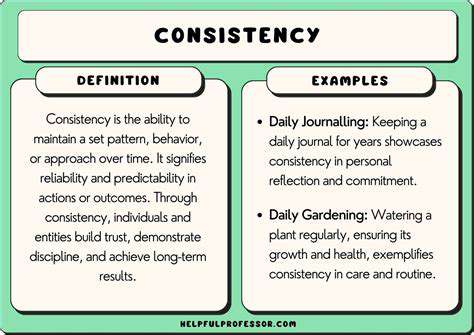Your Puppy Won't Sit? Solving Common Sit Command Problems

Common Mistakes to Avoid During Training
Incorrect Timing and Cues
One of the most common pitfalls in puppy training is using inconsistent timing with your cues. If you're rewarding a desired behavior, like a sit, too late, the puppy won't associate the action with the reward. This can lead to confusion and frustration for both you and your furry friend. Precise timing is crucial; you need to deliver the treat or praise immediately following the desired behavior for the puppy to understand the connection. This reinforces the behavior and makes learning much more effective. Consistency in timing is just as vital as consistency in the cue itself. If you sometimes reward a sit immediately and other times after a few seconds, the puppy will struggle to understand what you're asking.
Another crucial aspect of timing is using clear and concise cues. A vague or inconsistent cue will only confuse your puppy. Think about the difference between a sharp sit and a drawn-out, hesitant command. The sharp, clear command gives the puppy a much better understanding of what you expect. Combined with immediate positive reinforcement, this will dramatically improve your training success. Proper timing and clear cues are the cornerstones of effective puppy training.
Rewarding the Wrong Behavior
A common mistake is inadvertently rewarding unwanted behaviors. For example, if you're trying to teach a puppy to leave it, but you accidentally give them attention or a treat when they try to grab something they shouldn't, you're actually reinforcing that behavior. This is a subtle but significant error that can hinder your training progress. It's essential to be mindful of all interactions and make sure you're rewarding only the desired behaviors, not the ones you want to discourage. This might involve redirecting the puppy's attention or ignoring unwanted behaviors entirely.
Another example of rewarding unwanted behavior is if your puppy jumps up on you when you enter a room. Giving in to their enthusiasm, especially with a pat or a treat, reinforces the jumping behavior. Instead of rewarding the jumping, you need to ignore it. This can be challenging, but it's vital for teaching your puppy appropriate behavior. You can also use a verbal cue like no or a redirect to help them understand what you want. By understanding and addressing this, you'll be better positioned to correct your approach and achieve the desired results in your training.
Seeking Professional Guidance if Needed
Understanding the Root Cause
Many factors can contribute to a puppy's reluctance to sit on command. It's crucial to understand the underlying reasons to effectively address the issue. Perhaps the puppy is overwhelmed by stimuli in the environment, making it difficult to focus. Or, the puppy might not have fully grasped the concept of associating a word or cue with a desired action. A lack of proper training methods, inconsistency in commands, or even a medical condition could also be at play. Identifying the root cause is the first step in developing a successful training strategy.
Consider the puppy's age and developmental stage. Puppies learn at different paces, and expecting immediate results can be frustrating for both the owner and the pet. A consistent approach, combined with positive reinforcement, is key to building a strong foundation for future training. Patience is paramount in this process. Also, observing the puppy's body language and understanding their cues can provide valuable insights into their needs and potential challenges.
Implementing Effective Training Techniques
Once the root cause is identified, implementing the right training techniques is essential. Positive reinforcement methods, such as rewarding desired behavior with treats, praise, or toys, are highly effective in motivating puppies. Consistency in your commands and rewards is vital for the puppy to understand the expected response. Use clear and concise commands, and avoid confusing the puppy with mixed signals.
Breaking down the sit command into smaller, manageable steps can be helpful. For example, start by teaching the puppy to focus on your hand or a specific cue. Gradually introduce the verbal command sit as you guide the puppy into the desired position. Be patient and understanding, celebrating even the smallest successes. Remember, every step forward is a victory in the training process.
Consider incorporating toys or other engaging activities into the training sessions. This helps to keep the puppy motivated and engaged, making the learning process more enjoyable. Using visual aids, like a treat held above the puppy's head, can also help direct the puppy towards the desired position. Regular, short training sessions are more effective than long, drawn-out ones. Short, focused sessions help maintain the puppy's attention span and keep the training fun.
If the puppy remains resistant despite consistent training, consulting a professional dog trainer or veterinarian can provide valuable guidance and support. They can offer personalized advice and identify any underlying issues that might be hindering the training progress. A professional perspective can provide valuable insights and strategies to overcome obstacles.
Read more about Your Puppy Won't Sit? Solving Common Sit Command Problems
Hot Recommendations
- The Impact of Early Socialization on a Dog's Interaction with Other Animals
- Car Travel and Puppy Socialization: Making the Journey a Positive Experience
- The Importance of Early Environmental Exposure for Puppy Development
- Taking Your Puppy to the Vet: Positive Socialization Strategies
- Making Training a Positive Experience for Your Puppy
- Public Transportation and Puppy Socialization: A Step by Step Guide
- Safe Socialization: Allowing Others to Pet Your Puppy
- Helping a Puppy Who Struggles with "Stay"
- Positive Puppy Interactions: Making Meetings with New Friends Fun
- No Treats Needed? Training Basic Commands with Verbal Praise










